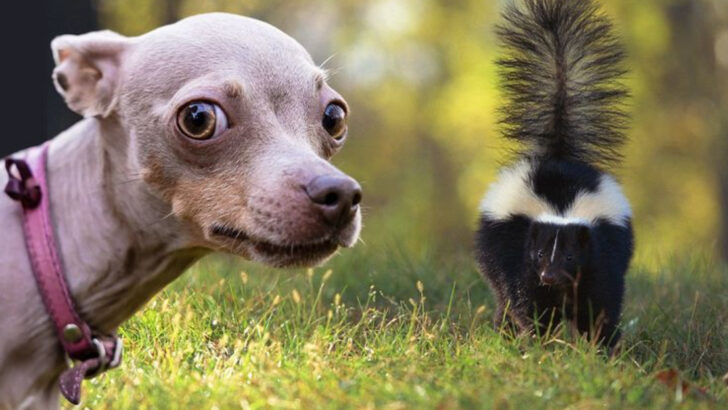Dogs may be the kings of unconditional love, but that doesn’t mean they adore every living thing they meet. In fact, some creatures send them into full-blown chaos—barking, growling, or scrambling in the opposite direction like their tail is on fire.
It’s not just about predators or threats. Some animals annoy dogs simply by existing. Whether it’s a critter that moves too fast, smells too weird, or just invades their personal space, certain creatures are guaranteed to make a pup’s fur stand on end.
Ever seen a dog lose its mind over something you didn’t even notice? There’s a reason for that. Their instincts are razor-sharp, and their pet peeves run deep.
From the sneaky to the downright terrifying, these 20 creatures know exactly how to push a dog’s buttons. Get ready for some hilarious, dramatic, and totally relatable canine grudges.
Cats
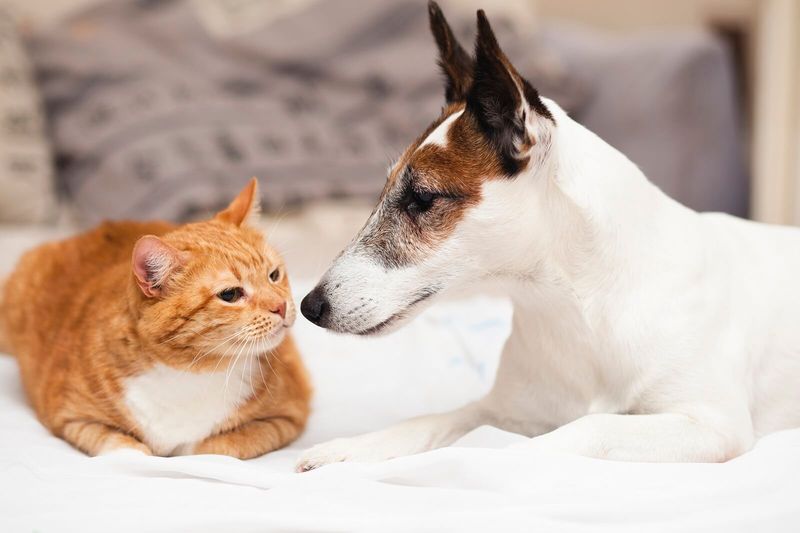
Dogs and cats are infamous for their rivalry. Many dogs find cats’ aloof nature and quick movements frustrating. While some dogs may try to play, cats can be unpredictable, often swatting or hissing if approached too quickly. This erratic behavior can confuse and annoy dogs, leading to a less-than-friendly relationship.
Additionally, cats have a distinct scent that dogs might find off-putting. This scent is especially notable in outdoor cats that roam different environments. Dogs rely heavily on their sense of smell and may find feline scents overwhelming or unfamiliar. Cats’ territorial nature also clashes with dogs’ friendly, often intrusive demeanor.
Squirrels
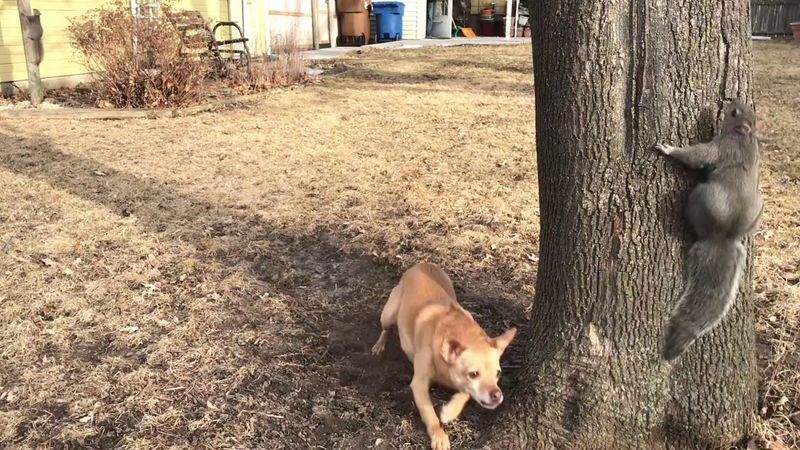
Squirrels are a common sight in parks and backyards, and dogs are often fascinated by their quick, darting movements. This fascination can quickly turn into frustration as dogs try to chase them, only to find themselves unable to reach the agile creatures. The high-pitched chatter of squirrels can also be irritating to dogs.
Moreover, the unpredictable nature of squirrels, with their sudden stops and starts, triggers a dog’s prey drive. This instinctual response makes dogs eager to pursue, leading to endless rounds of chase. However, the swift and nimble squirrels usually outmaneuver them, leaving dogs bewildered.
Raccoons

Raccoons are nocturnal creatures that often come into contact with dogs when scavenging through trash. Their masked faces and dexterous paws give them an air of mystery that dogs find suspicious. Dogs are territorial by nature, and a raccoon rummaging near their home can trigger protective instincts.
Raccoons have a distinctive musky scent, which some dogs find unpleasant. Additionally, their growls and hisses are threatening, causing dogs to remain on high alert. The combination of smell, sound, and unexpected appearances make raccoons unwelcome visitors in a dog’s world.
Skunks
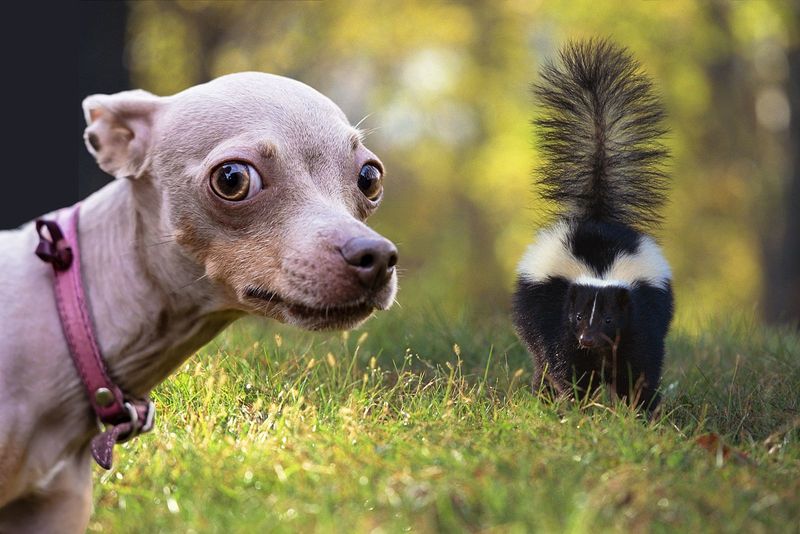
Skunks are infamous for their potent spray, a defensive mechanism that dogs often learn about the hard way. One encounter with a skunk can leave dogs smelly and uncomfortable for days. The strong, lingering odor is enough to make them wary of approaching skunks in the future.
Beyond the smell, skunks’ slow, deliberate movements can seem threatening to dogs in search of a quick chase. When a skunk turns its back and raises its tail, it’s a clear warning that dogs often don’t heed until it’s too late. This results in a memorable and unpleasant experience for both dog and owner.
Porcupines
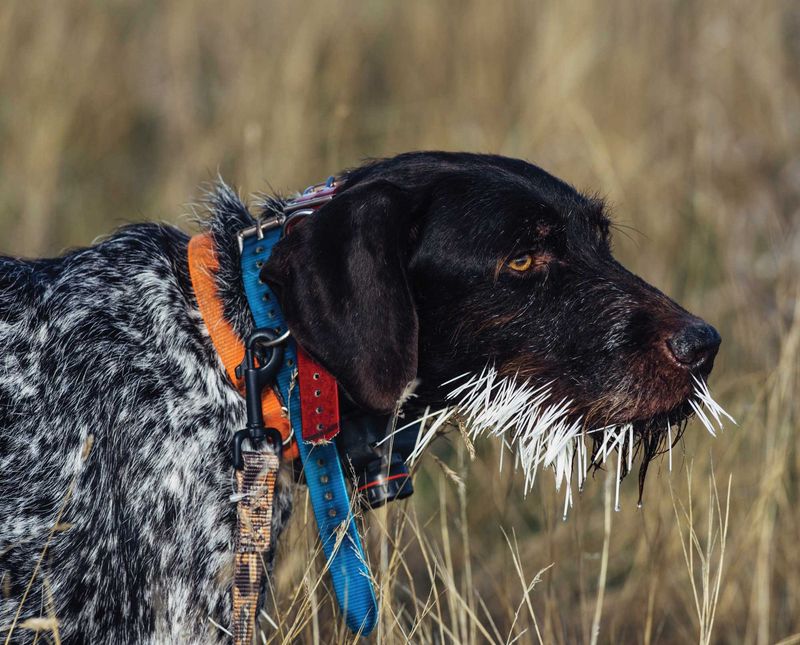
Porcupines are creatures that dogs quickly learn to avoid. Their quills pose a painful threat, often requiring veterinary attention if a dog gets too curious. The quills detach easily, embedding themselves in a dog’s nose or paws if contact is made.
Despite their prickly defense, porcupines are slow movers, which might tempt some dogs to investigate. This curiosity can lead to painful consequences. The unique challenge of dealing with quills makes porcupines one of the more formidable creatures dogs encounter in the wild or rural areas.
Bees

Bees can be a source of both fascination and fear for dogs. Intrigued by their buzzing and movement, dogs often try to snap at them, sometimes resulting in painful stings to the mouth or face. These encounters can lead to a dog developing a wary attitude towards buzzing insects.
The unpredictability of bees, along with their painful defense mechanism, makes them a nuisance for dogs. Some dogs may learn to avoid them after a sting, while others remain curious, leading to repeated encounters. This relationship is often a lesson in caution for our canine friends.
Snakes
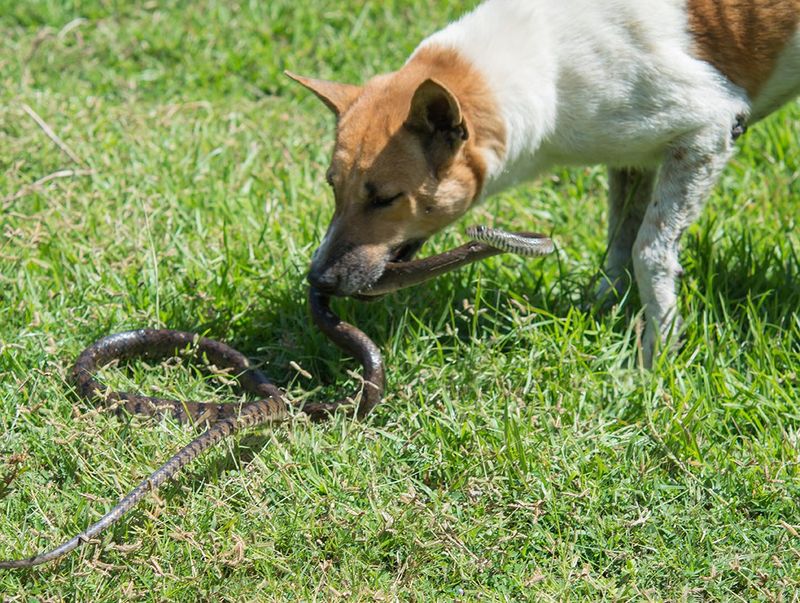
Snakes are mysterious and often frightening creatures for dogs. The silent, slithering movement of a snake can startle an unsuspecting dog, leading to fear or aggression. Venomous snakes pose a significant danger, and even non-venomous species can deliver a painful bite if threatened.
Dogs’ inquisitive nature may lead them to approach snakes, only to retreat quickly when faced with a hiss or strike. This encounter can be a frightening experience, teaching dogs to be cautious in areas where snakes are common. Owners often need to be vigilant in snake-prone regions to keep their pets safe.
Mice

Mice might be small, but they can cause a big stir in a household with dogs. Their quick movements and ability to squeeze through tiny spaces make them fascinating to dogs. However, this intrigue often turns into frustration as dogs attempt to catch them.
The scent of mice is another factor that can rile up dogs, as they detect their presence even when the mice are hidden. This can lead to frantic searching and barking, disrupting the household peace. While some dogs may lose interest over time, others remain ever-vigilant, ready to pounce at the slightest rustle.
Goats
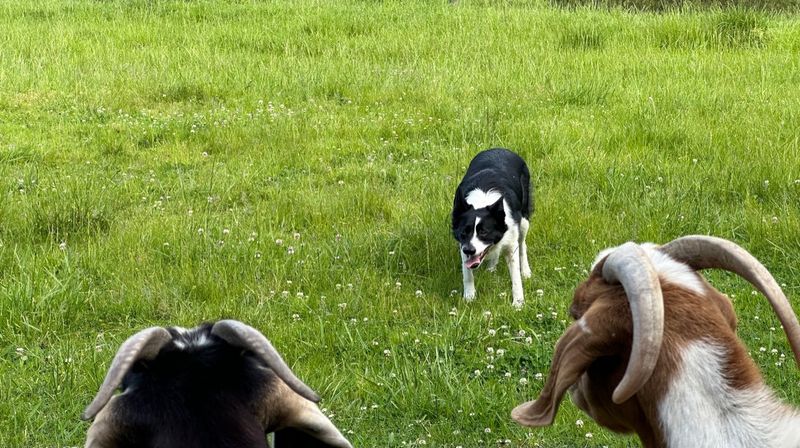
Goats can be perplexing creatures for dogs. Their playful yet stubborn nature can confuse dogs used to more predictable animals. Goats often engage in head-butting, which can be startling for dogs encountering them for the first time.
The scent and sound of goats are also unique, adding to the sensory overload dogs might experience. While some dogs learn to coexist peacefully with goats, others might find their antics too much to handle. This relationship varies greatly depending on the individual dog’s temperament and prior experiences with livestock.
Hedgehogs
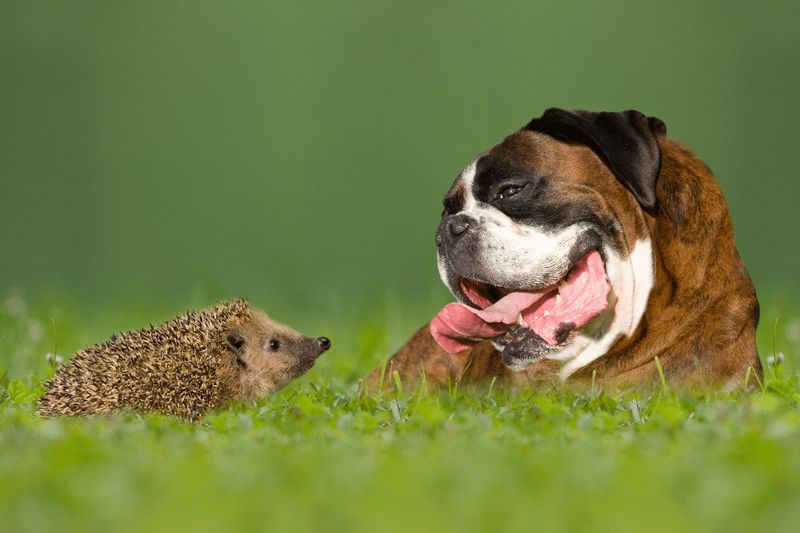
Hedgehogs are small, spiky creatures that intrigue dogs but can lead to confusing encounters. When threatened, hedgehogs curl into a tight ball, their spines deterring curious dogs from investigating further. This defense mechanism is often a surprise to dogs, who approach with playful intent.
The scent of hedgehogs is distinct, capturing a dog’s attention. However, their prickly exterior quickly teaches dogs to keep their distance. This combination of allure and deterrence makes hedgehogs a unique challenge, often leading to a respectful distance once the initial curiosity has been satisfied.
Cows
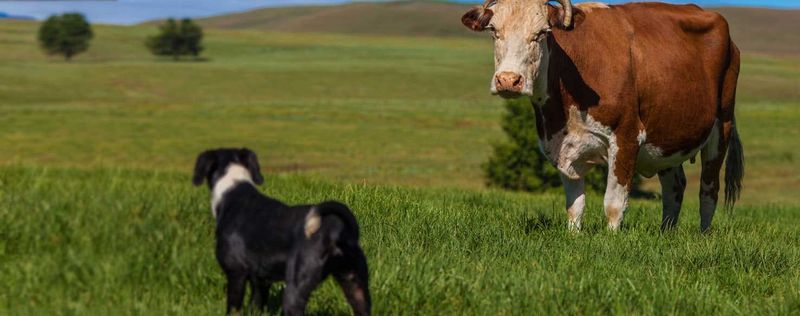
Cows, with their large size and gentle demeanor, can both intrigue and intimidate dogs. While some dogs may be curious and try to herd them, others might feel overwhelmed by their size and slow movements. The deep mooing sounds cows make can also be unsettling for some dogs.
The scent of cows is another factor that dogs must become accustomed to, especially if they live in rural areas. While some dogs eventually learn to ignore or even befriend cows, initial encounters can be filled with both curiosity and caution, as dogs navigate this new experience.
Rats
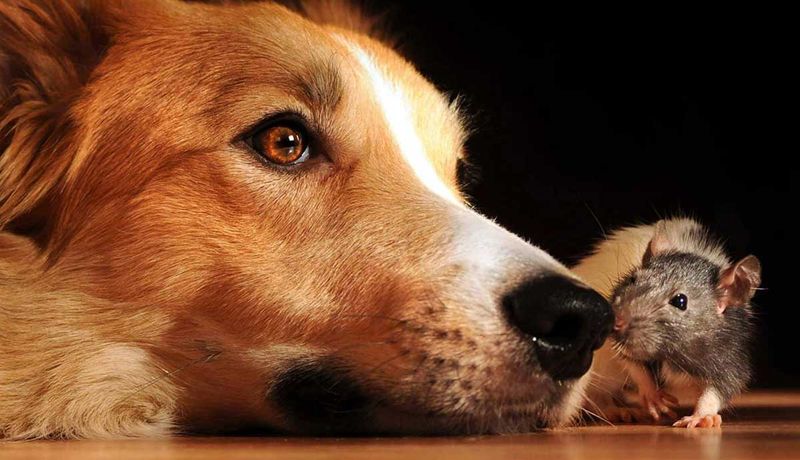
Rats can evoke strong reactions in dogs. Their rapid movements and ability to hide in small spaces make them both intriguing and frustrating. Dogs often try to catch them, leading to a lively chase but little success.
Rats carry a distinct scent that dogs easily detect, triggering their hunting instincts. This can lead to persistent barking or digging as dogs try to locate the source. In households with rat infestations, dogs may become restless or anxious. While some dogs eventually lose interest, others remain ever-watchful, ensuring rats stay on their toes.
Owls
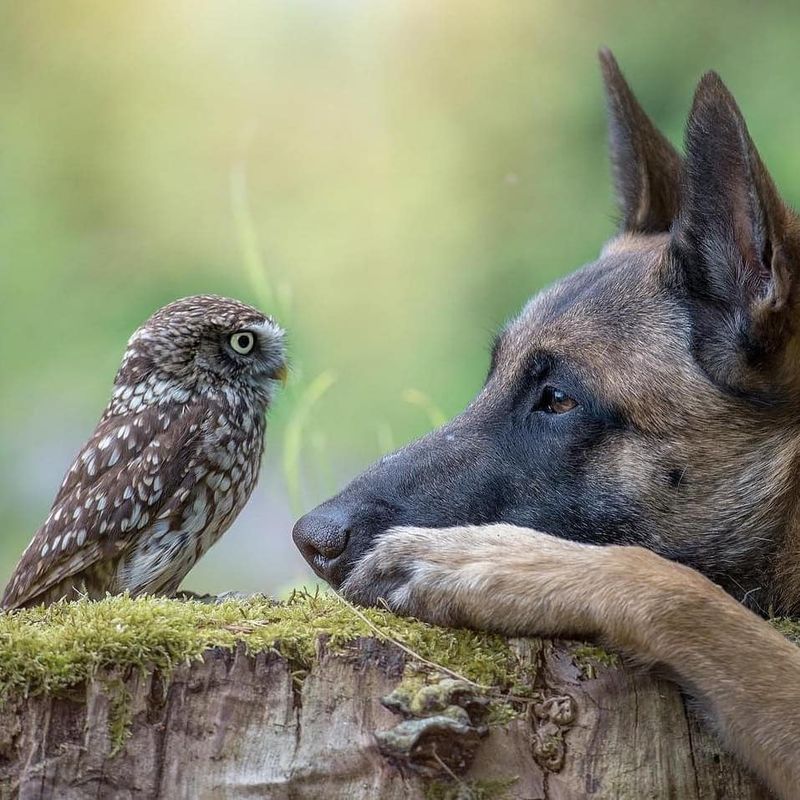
Owls are nocturnal birds that dogs rarely encounter directly, but their presence is often sensed. The eerie hoots of an owl can capture a dog’s attention, leading to barking or curiosity. Owls’ silent flight and sharp talons make them a formidable presence in the night.
Dogs’ keen hearing allows them to detect owls from a distance, often before they are visible. This mystery and the unfamiliar sound can be unsettling. However, most dogs learn to recognize and ignore owl calls over time, especially in areas where these birds are common nocturnal inhabitants.
Foxes

Foxes are cunning creatures that often outsmart dogs. Their sly nature and ability to disappear quickly make them a challenging foe. Dogs may catch a fox’s scent and become excited, only to find themselves unable to catch up with the quick and evasive animal.
Foxes often inhabit areas near human dwellings, leading to occasional encounters. This proximity can lead to territorial disputes, as dogs try to protect their home turf. The intriguing yet evasive nature of foxes often leaves dogs feeling frustrated and intrigued, making foxes one of the more cunning creatures dogs encounter.
Frogs
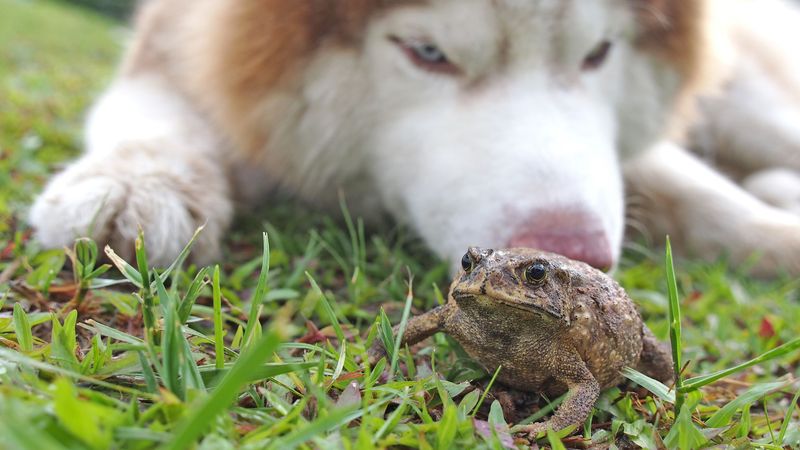
Frogs are fascinating yet perplexing creatures for dogs. Their sudden leaps and croaks can catch a dog’s attention, leading to curious engagement. However, the erratic hopping and slippery texture often confuse dogs trying to interact.
The moist, earthy scent of frogs adds another layer of intrigue, drawing dogs closer. While some dogs may attempt to catch frogs, the amphibians’ quick reflexes usually thwart these efforts. Over time, dogs may learn to observe rather than engage, content with watching their amphibian neighbors from afar. This coexistence can lead to peaceful interactions in shared environments.
Bats
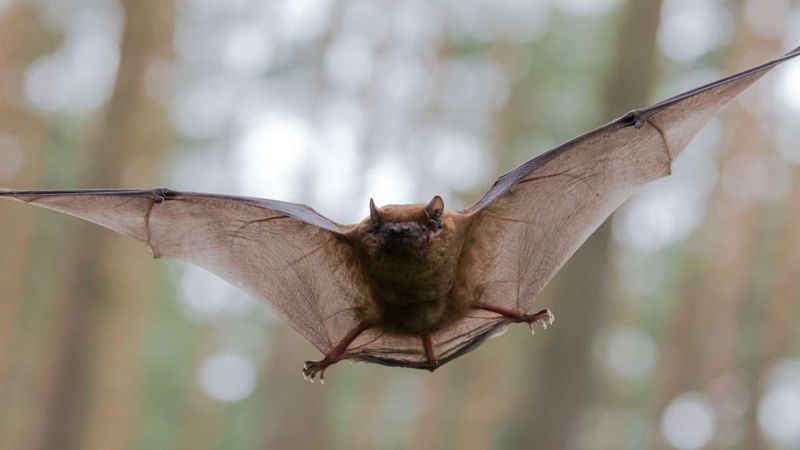
Bats are elusive creatures that fly with an erratic, unpredictable pattern that can intrigue dogs. Their nocturnal nature means that dogs often sense their presence through sound rather than sight. The high-pitched calls of bats can catch a dog’s attention, sparking curiosity.
Dogs are often bewildered by the swift, zigzagging flight of bats, which are difficult to follow or catch. This challenge, combined with the unfamiliar sounds, makes them a source of both interest and confusion. In areas where bats are common, dogs may eventually learn to ignore these nighttime visitors.
Turkeys
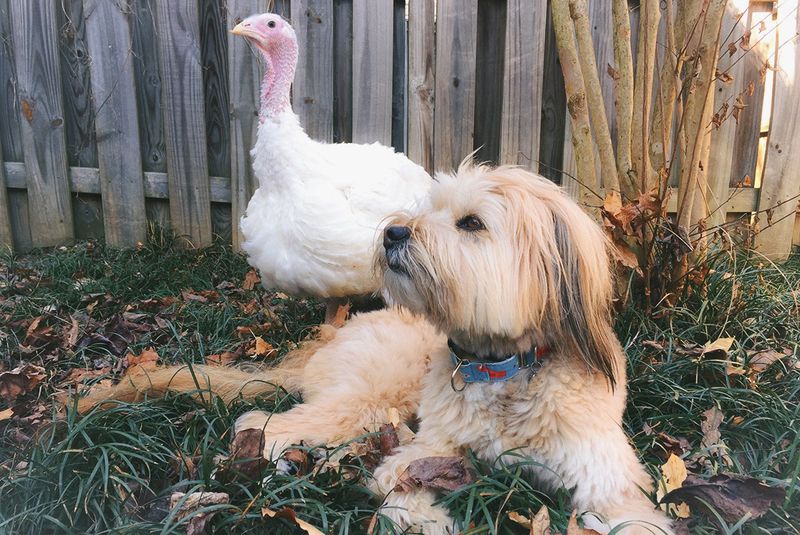
Turkeys are large, ground-dwelling birds that can be both intriguing and intimidating for dogs. Their gobbling calls and sudden flutters of wings can startle dogs, leading to wary but curious interactions. Dogs encountering turkeys for the first time may not know what to make of these large, feathered creatures.
The distinct scent and sound of turkeys add to the sensory overload dogs might experience. While some dogs may try to chase them, others may prefer to keep their distance. These interactions often depend on the dog’s personality and previous experiences with large birds.
Geese
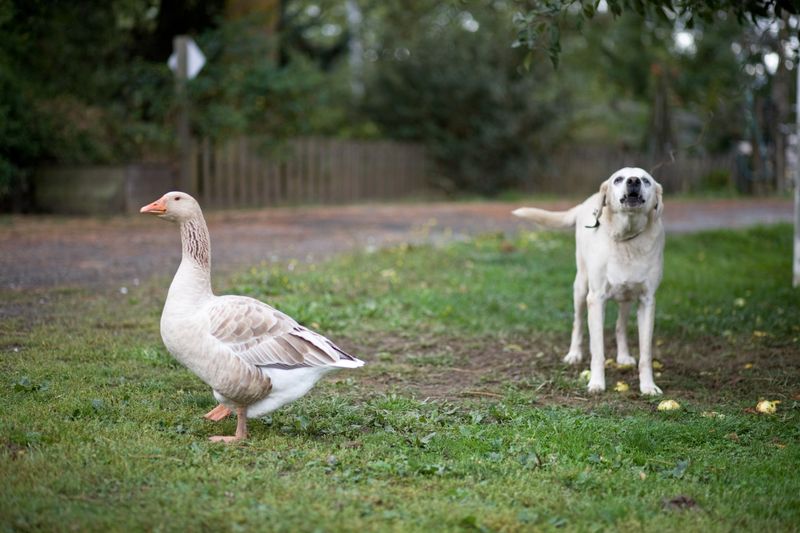
Geese are known for their aggressive behavior, especially when protecting their territory. Dogs approaching geese can find themselves faced with hissing and honking, which can be intimidating. Geese are not afraid to stand their ground, often surprising dogs with their boldness.
The loud calls and flapping wings of geese can unsettle dogs, leading to cautious encounters. While some dogs may back away, others might try to chase, resulting in a flurry of activity. The complex dynamics of these interactions mean that dogs often learn to approach geese with caution, respecting their space.
Coyotes
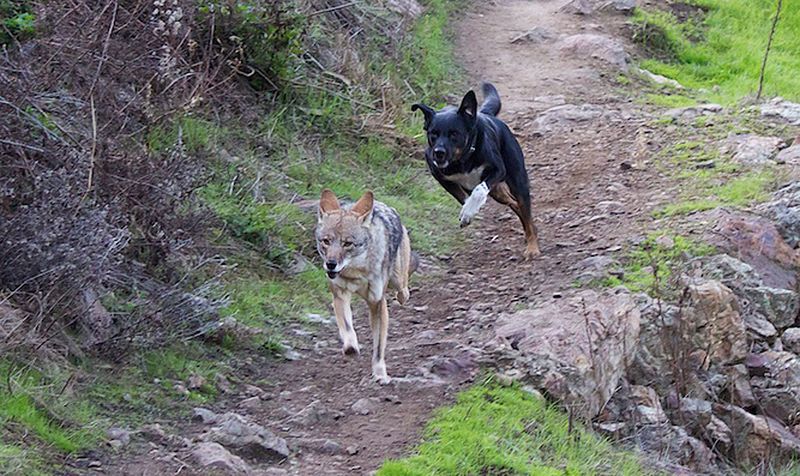
Coyotes are wild canines that can pose a threat to domestic dogs. Their presence often leads to tense encounters, especially in areas where they are common. The howls of coyotes can be unsettling, capturing a dog’s attention and sometimes eliciting a response.
Dogs may sense coyotes from a distance, their keen senses picking up on the scents and sounds of these wild creatures. This awareness can lead to increased alertness and protective behavior, especially in dogs with a strong territorial instinct. Owners must remain vigilant in coyote-prone areas to ensure the safety of their pets.
Deer

Deer are gentle yet elusive creatures whose sudden appearances can startle dogs. Their swift movements and large size can be both intriguing and intimidating. Dogs may try to chase deer, but the deer’s speed and agility usually result in a short-lived pursuit.
The scent of deer is distinct and often piques a dog’s curiosity. This can lead to extensive sniffing and tracking attempts, especially in rural areas where deer are common. While some dogs may learn to coexist peacefully with deer, others remain fascinated by these graceful creatures, ever ready for a chase.

